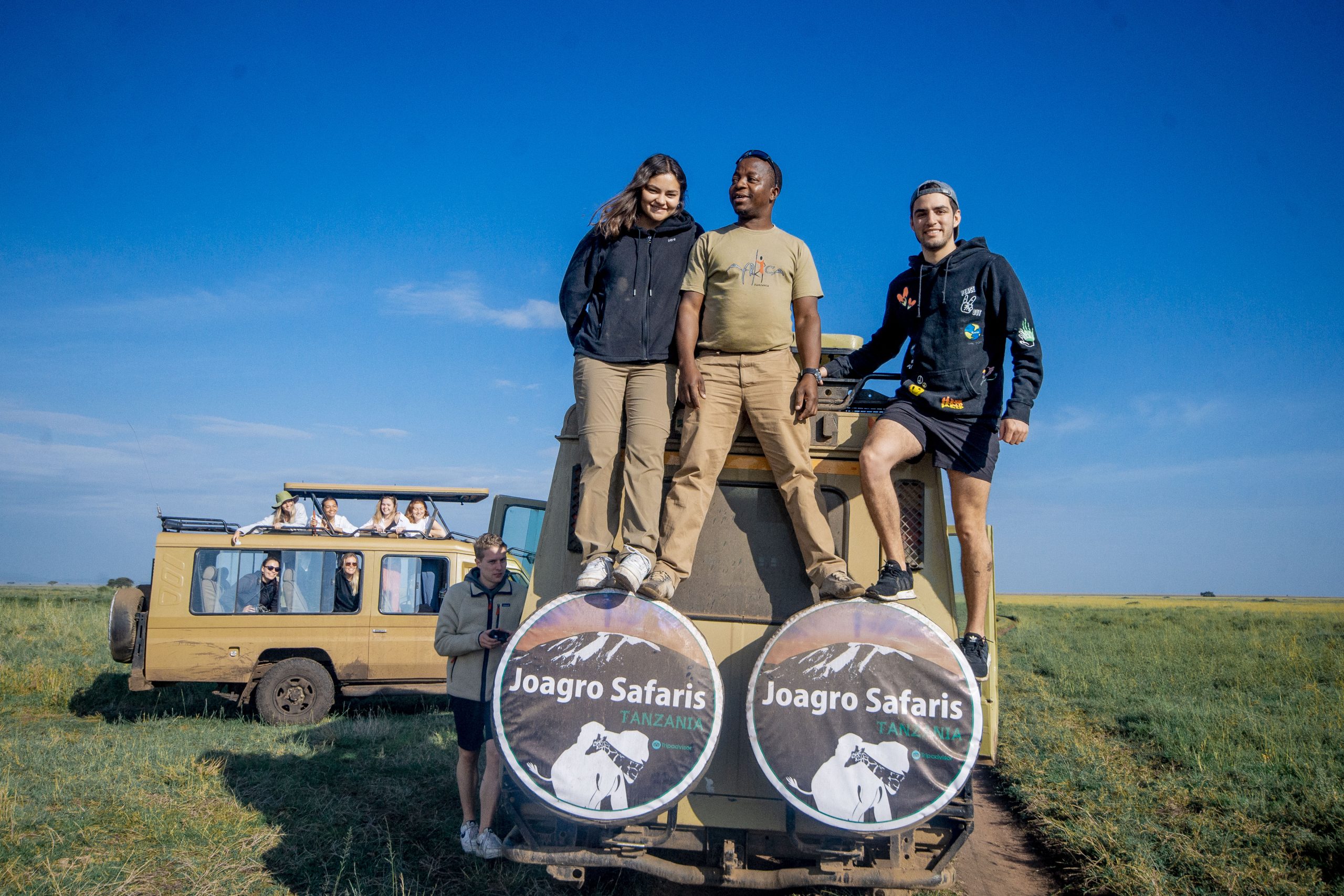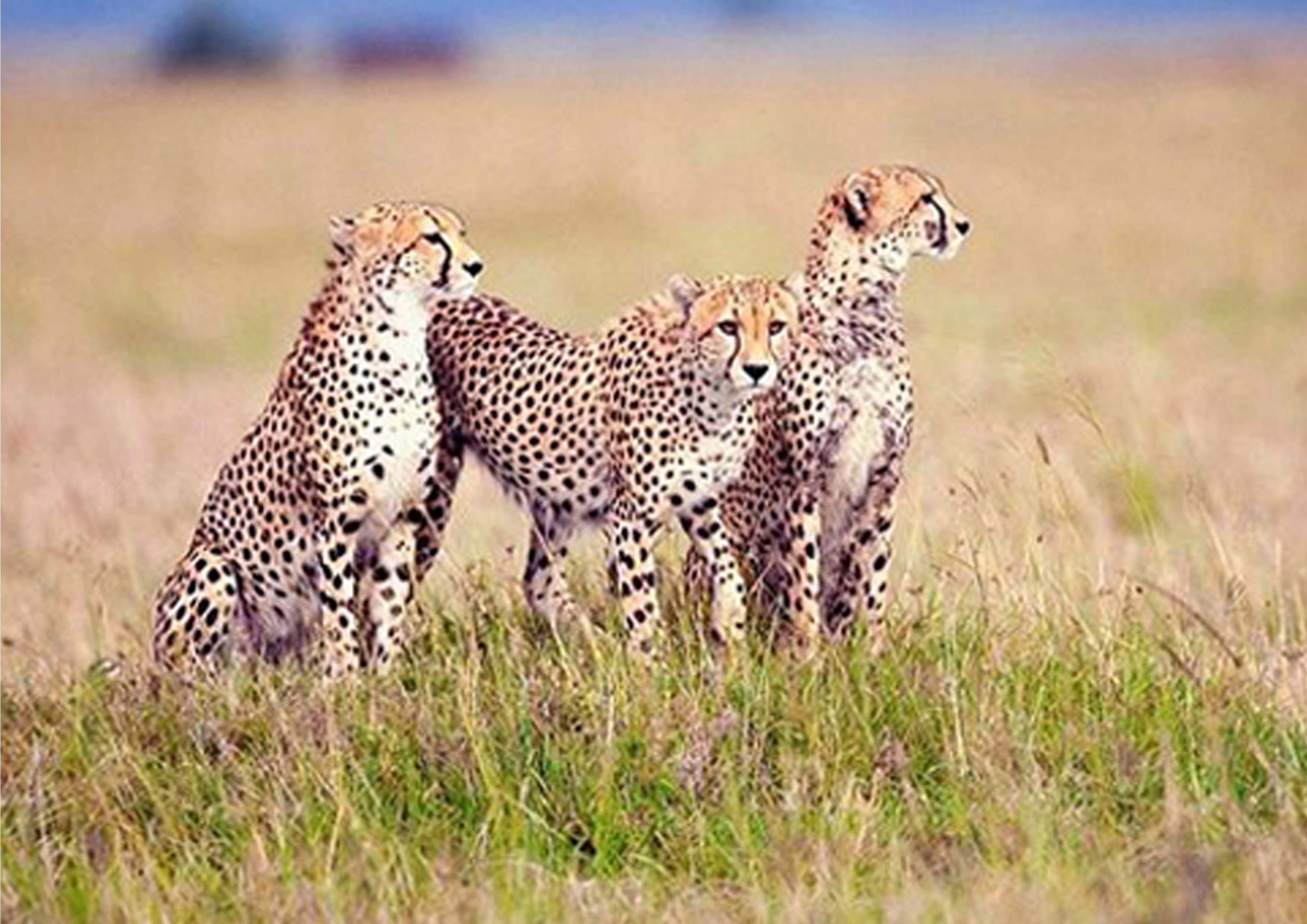- About
- SAFARIS
- Climbing
- Zanzibar
- Destinations
- Travel Bureau
Serengeti National Park, located in Tanzania, is one of Africa’s most known and legendary wildlife reserves. It is recognized for its wide plains, profusion of species, and breathtaking natural beauty. This is how Serengeti National Park is described:
Landscape: The Serengeti spans approximately 14,750 square kilometers (5,700 square miles) and is characterized by expansive grasslands, dotted with acacia trees and occasional rocky outcrops called kopjes. The landscape also includes riverine forests along the park’s various waterways.
Wildlife: Serengeti is home to an incredible diversity of wildlife, making it one of the best places for safari experiences in Africa. The park is particularly renowned for its large populations of lions, cheetahs, leopards, elephants, giraffes, zebras, buffalo, and various antelope species such as wildebeest and gazelles.
Great Migration: Perhaps the most famous natural spectacle in Serengeti National Park is the Great Migration, where millions of wildebeest, zebras, and other herbivores migrate in search of fresh grazing grounds, following the seasonal rains. This annual migration is a breathtaking sight and is considered one of the Seven Natural Wonders of Africa.
Birdlife: In addition to its mammalian inhabitants, Serengeti is also a haven for birdwatchers, boasting over 500 bird species. From colorful rollers and storks to predatory raptors like eagles and vultures, the park offers abundant opportunities for bird enthusiasts to observe and photograph diverse avian species.
Conservation Efforts: Serengeti National Park is recognized globally for its conservation efforts aimed at protecting its rich biodiversity and ecosystems. The park is part of the larger Serengeti ecosystem, which includes adjacent protected areas such as Ngorongoro Conservation Area and Maswa Game Reserve, forming one of the largest and most intact ecosystems on Earth.
Tourism: Tourism plays a significant role in the management and funding of conservation efforts within Serengeti National Park. Visitors can explore the park through guided safaris, hot air balloon rides, and walking safaris, offering unparalleled opportunities to witness Africa’s wildlife in their natural habitat.
Cultural Significance: Beyond its natural wonders, Serengeti also holds cultural significance, as it is home to several indigenous tribes, including the Maasai people, who have coexisted with wildlife for centuries. Their traditional lifestyles and cultural practices add depth and richness to the Serengeti experience.
Overall, Serengeti National Park offers a once-in-a-lifetime wilderness experience, where visitors can witness the raw beauty of nature and encounter some of Africa’s most iconic wildlife in their natural environment. Serengeti National Park is undoubtedly the best-known wildlife sanctuary in the world, unequalled for its natural beauty and scientific value, it has the greatest concentration of plains game in Africa.
The Serengeti National Park in Tanzania was established in 1952. It is home to the greatest wildlife spectacle on earth – the great migration of wildebeest and zebra. The resident population of lion, cheetah, elephant, giraffe, and birds is also impressive. There’s a wide variety of accommodation available, from luxury lodges to mobile camps. The park covers 5,700 sq miles, (14,763 sq km), it’s larger than Connecticut, with at most a couple hundred vehicles driving around.

The park can be divided into three sections. The popular southern/central part (Seronera Valley) is what the Maasai called the “serengit,” the land of endless plains. It’s a classic savannah, dotted with acacias and filled with wildlife. The western corridor is marked by the Grumeti River and has more forests and dense bush. The northern Lobo area, which meets up with Kenya’s Masai Mara Reserve, is the least visited section.
Two World Heritage Sites and two Biosphere Reserves have been established within the 30,000 km2 region. Its unique ecosystem has inspired writers from Ernest Hemingway to Peter Mattheissen, filmakers like Hugo von Lawick and Alan Root, as well as numerous photographers and scientists, many of whom have put their works at our disposal to create this website.
The Serengeti ecosystem is one of the oldest on earth. The essential features of climate, vegetation, and fauna have barely changed in the past million years. Early man himself made an appearance in Olduvai Gorge about two million years ago. Some patterns of life, death, adaptation, and migration are as old as the hills themselves.
It is the migration for which Serengeti is perhaps most famous. Over a million wildebeest and about 200,000 zebras flow south from the northern hills to the southern plains for the short rains every October and November, and then swirl west and north after the long rains in April, May, and June. So strong is the ancient instinct to move that no drought, gorge, or crocodile-infested river can hold them back.
The wildebeest travels through a variety of parks, reserves, and protected areas and through a variety of habitats. Join us to explore the different forms of vegetation and landscapes of the Serengeti ecosystem and meet some of their most







